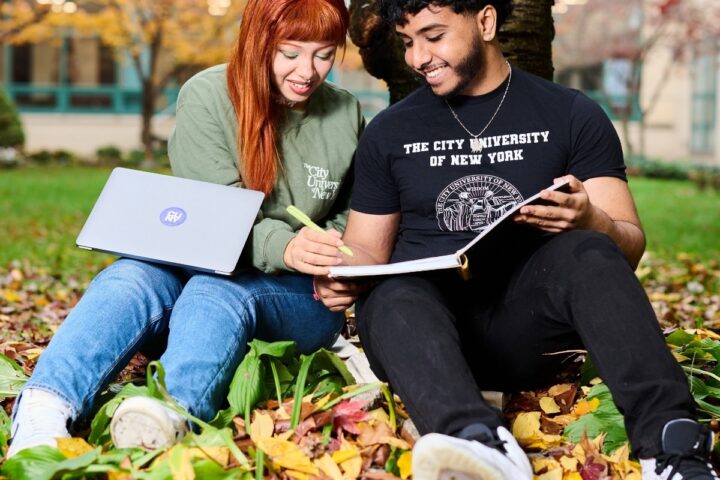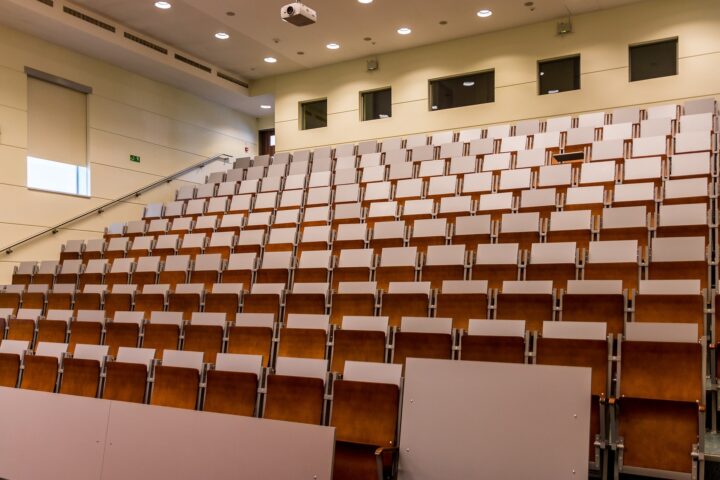Queens College has reintroduced a calligraphy course this semester after a decades-long absence.
The new course, Lettering and Calligraphy, allows students to explore letterforms through a combination of both physical and digital mediums. The course was made possible through a donation from the Pine Tree Foundation of New York, a philanthropic organization administered by QC alumna Szilvia Szmuk. Open to students of all levels, the course offers resources and opportunities that are not typically available in other design courses including access to materials such as brush pens, nib pens, and iPads, that enable students to explore a wide range of tools and techniques while developing their skills.
The course’s revival was made possible through the combined efforts of alumni Szmuk and Jerry Kelly, and the dedication of QC Design Professor Amy Fortunato. Fortunato, who now leads the reinstated course, shared insights into the journey of its revival.
“I learned about this through a conversation with the dean and President Wu and because I already had a background in typography and was part of the design program, it seemed like a natural fit,” Fortunato said. “It aligned with the goals that I had of wanting to find opportunities to increase the amount of typographic offerings that we had in our program. So in some ways, it was kind of being in the right place at the right time with the right idea.”
Fortunato’s background in typography played a key role in shaping the course’s direction. She emphasized the importance of integrating traditional techniques with modern applications to provide students with a comprehensive understanding of the field.
“It was really important to me that the class bridged the traditional tools, and also thought about the digital tools. I wanted to give everyone the opportunity to understand, one, where these digital tools are coming from, and then also, really experience the difference between them,” she said.
“This is the first design class I have taken that uses both physical and digital mediums, where we work on multiple projects at once with those different mediums, and have gotten the amazing opportunity to have a guest speaker who works in the field to ask questions to and get a better understanding of the craft from first-hand experience,” said Sarah Greenberg, a QC student majoring in Graphic Design and Studio Art, who is currently enrolled in the reinstated Lettering and Calligraphy course.
Kelly, a renowned book designer and QC alumnus, took the original calligraphy course as an undergraduate student in the 1970s. “Calligraphy is an important art, which relates to many other fields. The opportunities and possibilities are numerous. An exposure to the art of letters can be useful in many pursuits, from typography, font design, most branches of graphic design, and book design, to pure calligraphy as an art and commercial lettering,” he said. After discovering that the course had been discontinued during conversations with fellow alumnus Szmuk, Kelly brought up the idea of reinstating the course to QC President Frank Wu during a meeting of the Grolier Club, a NYC based society dedicated to the art of the books.
Fortunato also discussed her approach to structuring the course to benefit students across disciplines. “It’s about more than just teaching students how to write beautiful letters,” she said. “This is about helping them see how calligraphy connects to typography, graphic design, and visual storytelling. It’s a tool for thinking critically and creating meaning through design.”
Reflecting on what she hopes students will take away from the course, Fortunato said:
“I hope I can share some of the excitement that I have for it and some of the love that I have for it, and that, you know, who knows? It could be something small that could have a positive effect on some personal aspect of your life, or maybe you’re sitting in a studio someday at your future job, and they need lettering for this particular project. So whether it’s an immediate, short term or long term, I’m excited about the possibility. It may not become anything. It could become someone’s passion, but I think that being able to have this class as an introduction, opens up possibilities that weren’t there before.”
The revival of this calligraphy course demonstrates QC’s commitment to preserving the arts while adapting to contemporary needs.
Greenberg also offered advice to students considering taking the course: “I would tell a student who was considering taking this course to be patient, practice, experiment, and have fun because the more comfortable you feel with the pen or marker in your hand, the easier the writing flows out and one’s individual style begins to emerge.”











